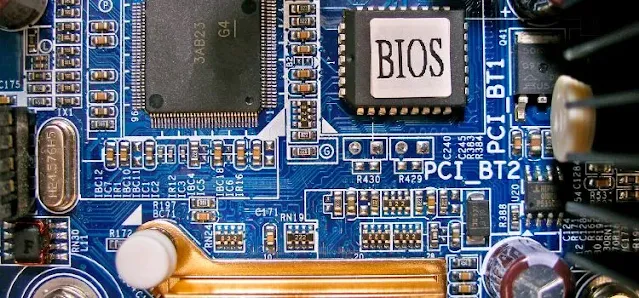Explore some easy steps to check the motherboard BIOS version. In this guide, we'll walk you through the step-by-step process of checking your motherboard's BIOS version.

Accessing the BIOS/UEFI Interface:
The initial step in determining your motherboard's BIOS version involves accessing the BIOS/UEFI interface. To embark on this process, restart your computer and, crucially, intervene during the boot sequence by pressing the designated key to enter the BIOS setup.
This key varies and is contingent upon your motherboard's manufacturer, with commonly used keys including Del, F2, F10, or Esc. To pinpoint the specific key for your motherboard, consult the accompanying manual or observe the splash screen displayed during the boot process.
Navigating the BIOS/UEFI Interface:
Upon successfully entering the BIOS/UEFI interface, the subsequent step is navigation. Employ the arrow keys to traverse through the interface. Although layouts may differ among manufacturers, seek out a section denoted as "Main," "Advanced," or "System Information." Typically, the BIOS version is prominently displayed either on the main screen or within a dedicated information tab, facilitating easy identification.
Using System Information Tools:
For those finding navigation within the BIOS interface challenging or preferring a more user-friendly approach, checking the BIOS version via system information tools within the operating system is a viable alternative.
On Windows, execute this by opening the "Run" dialog (Win + R), typing "msinfo32," and hitting Enter. Within the "System Summary" tab, locate the "BIOS Version/Date" entry. Linux users can opt for the terminal command "sudo dmidecode -t bios" to retrieve this information.
Manufacturer-Specific Utilities:
Certain motherboard manufacturers furnish dedicated utilities designed explicitly for BIOS checking and updating. To avail yourself of these tools, peruse the official website of your motherboard's manufacturer. Such utilities generally provide a streamlined interface, potentially including features like automatic BIOS updates, enhancing user convenience.
Online Resources:
In instances where direct access or manufacturer-specific utilities prove insufficient, recourse to online resources becomes viable. Navigate to the official website of your motherboard's manufacturer and explore the support or downloads section.
By entering your motherboard model, you can readily access information pertaining to the latest BIOS version available for your system, ensuring comprehensive and up-to-date details.
Third-Party Software:
Third-party software tools represent an additional avenue for gleaning detailed information about your system, including the BIOS version. However, exercising caution is paramount, and reliance on reputable sources is essential to mitigating potential security risks.
While these tools can offer a convenient alternative, they should be employed judiciously and preferably in conjunction with manufacturer-endorsed methods to ensure accuracy and reliability in BIOS version verification.
Conclusion:
Regularly checking and updating your motherboard's BIOS is essential for maintaining system stability, compatibility, and security.
By following the steps outlined in this guide, you can easily determine your motherboard's BIOS version and take the necessary steps to keep your system up-to-date. Always refer to the official documentation provided by your motherboard manufacturer for accurate and reliable information.
Frequently Asked Questions
1. Why is it important to check my motherboard's BIOS version?
Ensuring that your motherboard's BIOS is up-to-date is crucial for various reasons. BIOS updates often include improvements in system stability, compatibility with new hardware components, and security enhancements.
Keeping your BIOS current ensures that your computer operates optimally and remains compatible with the latest software and hardware releases, ultimately enhancing the overall performance and reliability of your system.
2. Can I check my motherboard's BIOS version without entering the BIOS/UEFI interface?
Yes, it's possible to check your motherboard's BIOS version without entering the BIOS/UEFI interface. On Windows, you can use the System Information tool by pressing Win + R, typing "msinfo32," and looking under the "BIOS Version/Date" entry. Linux users can utilize the terminal command "sudo dmidecode -t bios." These methods provide a convenient alternative for users who may find navigating the BIOS interface challenging.
3. How often should I check for BIOS updates?
The frequency of checking for BIOS updates depends on your specific use case. As a general rule of thumb, it's advisable to check for updates periodically, especially when encountering hardware compatibility issues or planning to upgrade major system components. However, exercise caution and only update the BIOS if necessary, as incorrect updates can potentially lead to system instability.
4. Are there any risks associated with updating the BIOS?
While updating the BIOS is generally safe, there are potential risks involved. Power outages or interruptions during the update process can result in a failed update, potentially rendering your motherboard unusable.
It's crucial to follow the manufacturer's instructions precisely, use a reliable power source, and avoid interrupting the update process. Additionally, only update the BIOS if there is a specific need, such as addressing compatibility issues or gaining access to new features.
5. Can I check my motherboard's BIOS version using third-party software?
Yes, there are third-party software tools available that can provide information about your motherboard's BIOS version. However, it's important to exercise caution and use reputable software sources to avoid potential security risks. Manufacturer-provided tools or built-in system information utilities are generally more reliable and secure options for checking your BIOS version.
6. What should I do if I encounter difficulties checking my BIOS version or updating it?
If you encounter difficulties checking or updating your motherboard's BIOS, refer to the manufacturer's official documentation for guidance. Most motherboard manufacturers offer online support resources, including FAQs, forums, and contact information for technical support.
Before proceeding with any updates, ensure you have a backup of important data and carefully follow the manufacturer's instructions to mitigate potential risks. If uncertainties persist, seeking assistance from the manufacturer's support channels or professional assistance is advisable.